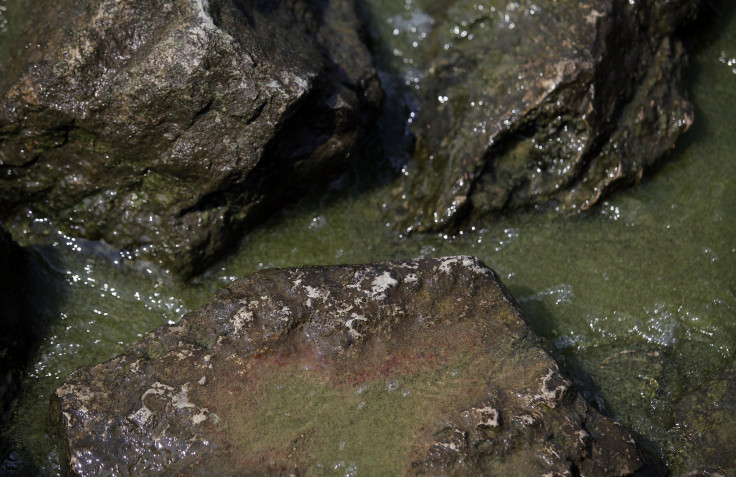Why Florida's Toxic Algae Bloom In 2016 Is Here To Stay, For Now

A slimy, thick blue-green algae is taking over Florida’s coasts and it just might be here to stay. In addition to posing a risk to human health, the algae-infested waters have a negative economic impact on local tourism in the Sunshine State and are taking a toll on the ecosystem.
The toxic algae bloom, formally called cyanobacteria, grows in warm and steady water. It has been physically described as "watery guacamole" and as thick as "pea soup." According to The Miami Herald, there are at least 44 hot spots scattered across South Florida as of the end of June. Earlier this month, Florida Gov. Rick Scott declared a state of emergency in Martin, St. Lucie, Lee and Palm Beach counties.
Officials in Florida have traced the toxic bloom to Lake Okeechobee — the second largest freshwater lake in the country. The problem, said John Campbell, a spokesman for the U.S. Army Corp of Engineers Jacksonville District, is that the lake has been pumped with nitrogen and phosphorous from a wide array of sources.
"The algae outbreaks are triggered by fertilizer sewage and manure pollution that the state has failed to properly regulate. It's like adding miracle grow to the water and it triggers massive algae outbreaks," Earthjustice spokeswoman Alisa Coe told CNN.
According to the Florida Department of Health, the algae blooms can cause problems with the nervous system, liver, skin and gastrointestinal system. "Exposure can happen through unintentionally swallowing lake or river water, breathing water spray or coming into direct contact with the blooms," the department of health said.
The recent magnitude of the toxic algae blooms have garnered it more attention, but the 2016 blooms are the eighth outbreak since 2004. And, according to National Geographic, the foul-smelling algae may become a recurring visitor to the region due to climate change and politics.
With temperatures on the rise, algae blooms are popping up around the globe everywhere from China to Lake Utah. The increasing temperatures will only add to the odds of algae appearing in Florida. Climate change, coupled with the state’s political climate regarding environmental reform, ultimately means the toxic blooms may be the new norm in Florida.
© Copyright IBTimes 2024. All rights reserved.






















